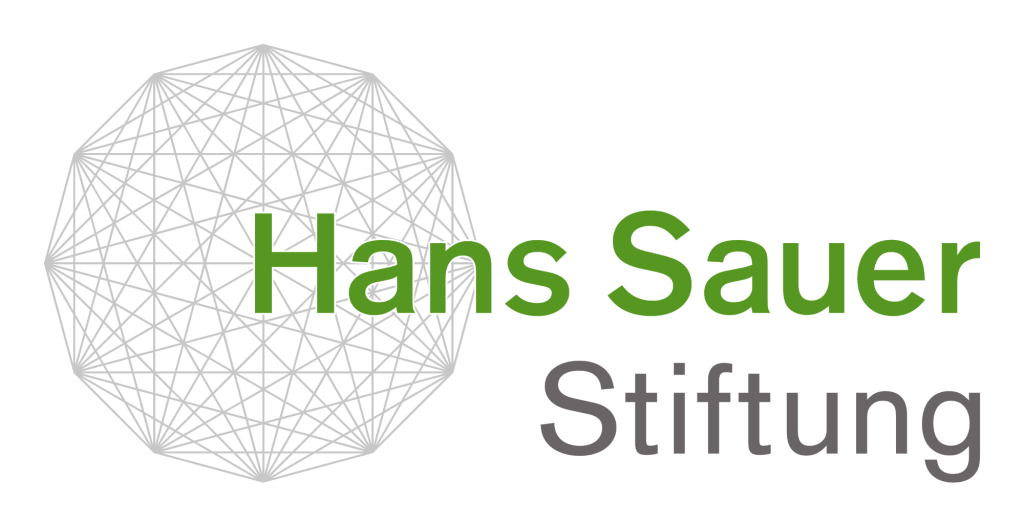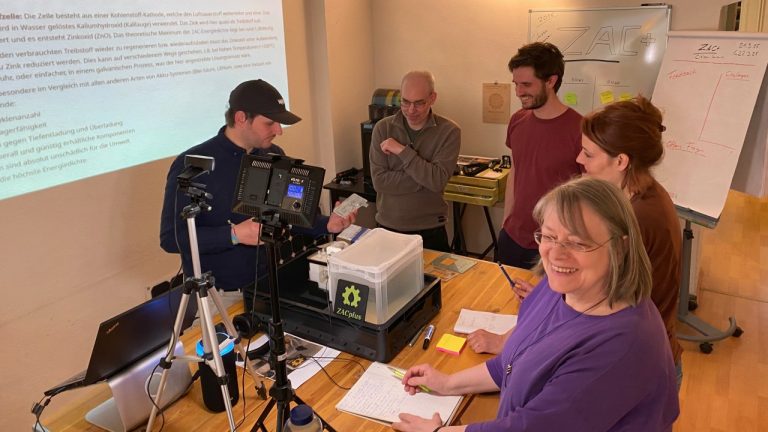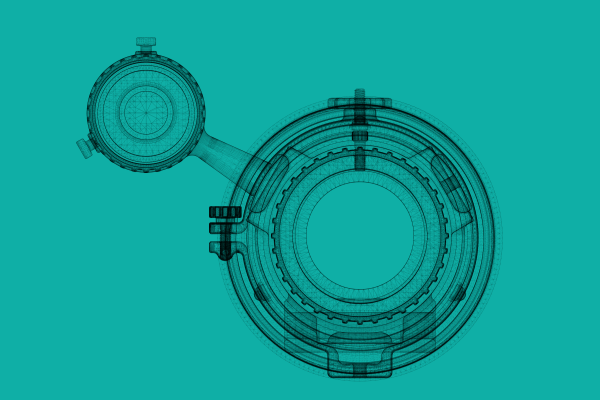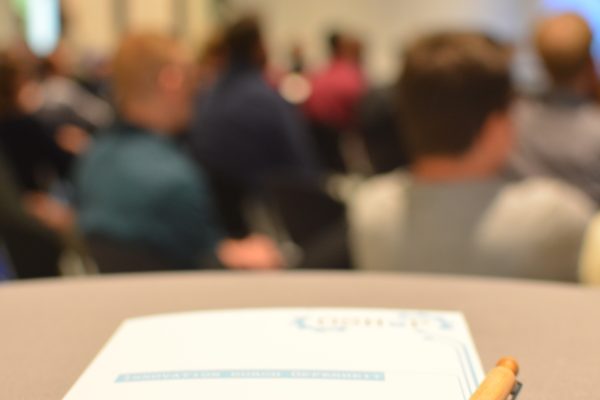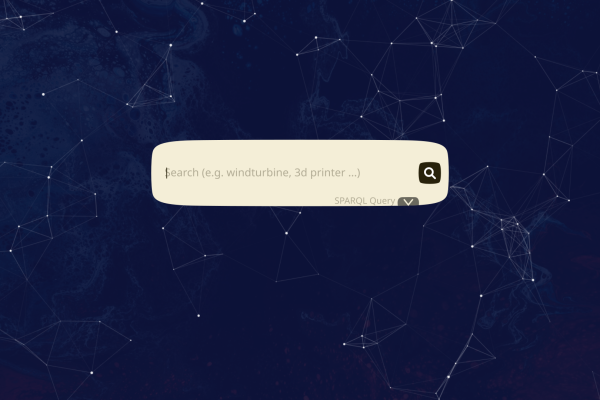A citizen science workshop on the zinc-air fuel cell took place at the weekend from 21 March to 22 March 2025, the documentation of which we already discussed in the last blog post. Sigrid has written a field report. Many thanks to Sigrid and enjoy reading!
Bright sunshine in Knobelsdorffstraße in Berlin Charlottenburg. It must be something out of the ordinary for us to go to the OSEG office instead of the Schlosspark.
Yes, it is something extraordinary!
A citizen science workshop, two afternoons long, in which we want to assemble a zinc-air fuel cell (ZAC+ = Zinc Air Cell, the “+” stands for “plus recycler”).
In other words, citizen participation in applied research into a self-sufficient energy storage system for a seasonal energy supply. All consistently open source.
The workshop is hybrid, working simultaneously at several locations with a continuous video connection for exchange and collaboration.
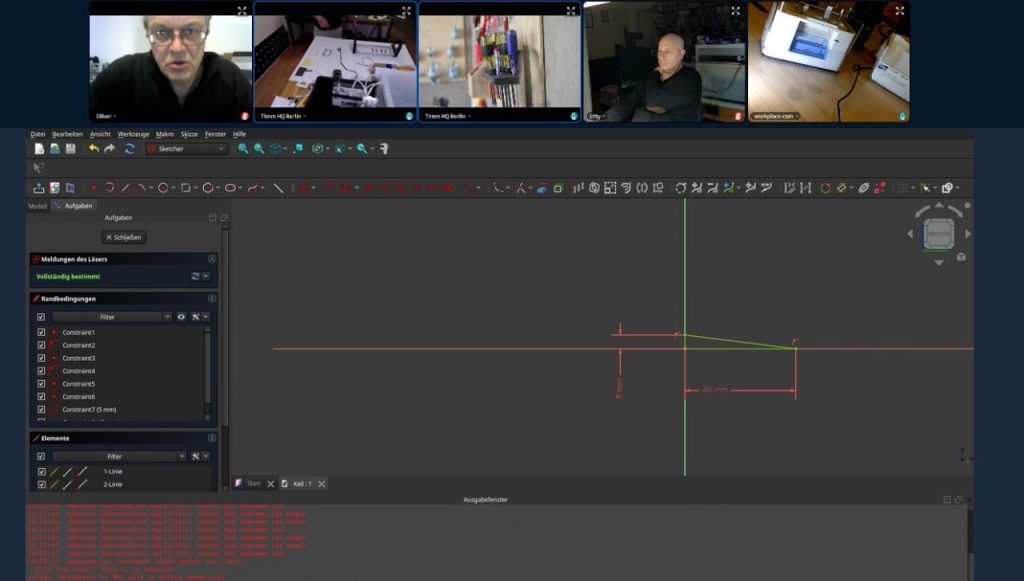
The workbenches are filmed so that we can see what the other groups are doing at any time (“Why don’t you show us again how you just did that with the gas cathode, Oli”). We also have channels for communication, where it often happens that several of us stand in front of the camera and talk, discuss, explain and agree.
This means that questions can be answered straight away, which is good because there is a strong knowledge gap: At one end Oliver, who has years of experience and has developed and built everything several times, and at the other end me, who is clueless but eager to learn.
We have ambitious plans and are combining several areas of research.
It’s all about the question of what works well and what works less well.
Because with ZAC+ we are involved in basic technical research:
- Which adjusting screws can be changed and what happens then? E.g. with the diaphragm or the air inflow.
- What is it like over time? How long do you get good results? – To this end, the energy density should be checked over long periods of time and the theoretical value compared with the real value.
- What is the lifecycle analysis actually like if you take into account the manufacture of the parts and their disposal?
But we are also involved in knowledge and science communication, which has been linked to this from the very beginning.
Every step we take is documented and the parts are photographed. Anthoula and Martin test variants for a visualisation and description of the parts and processes:
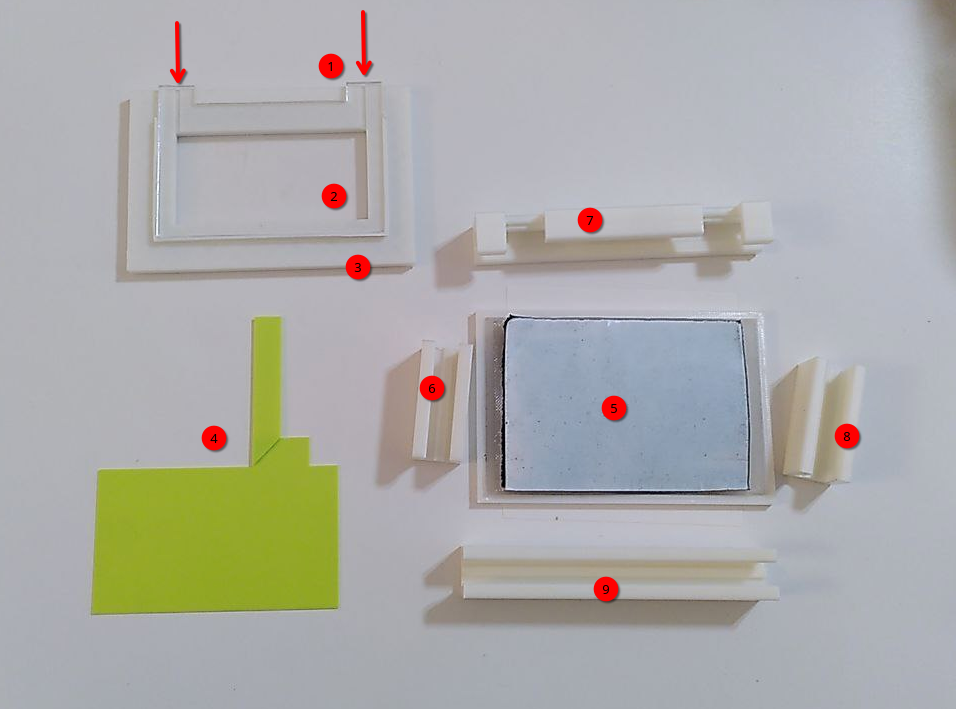
- Air/oxygen supply (important when bonding silicone sealant and glass, ensure supply)
- Light window
- Gas cathode holder with silicone seal
- Template with fold
- Membrane: 3 layers. White layer: PTFE (Teflon); Black layer: Activated carbon (+ a little PTFE); Nickel wire grid
- 6-9 fixing clamps
The steps are explained and questions are answered as quickly as possible, everything is written in the pad, to which everyone has access. Others should be able to rebuild the fuel cell on this basis using a parts list and assembly instructions. Therefore, the construction and explanations must be tested and optimised several times. (“Be careful when cutting! This thing is expensive and when folding, the strip must be on the right when the white side is facing forwards.” Maybe practise with paper first?)
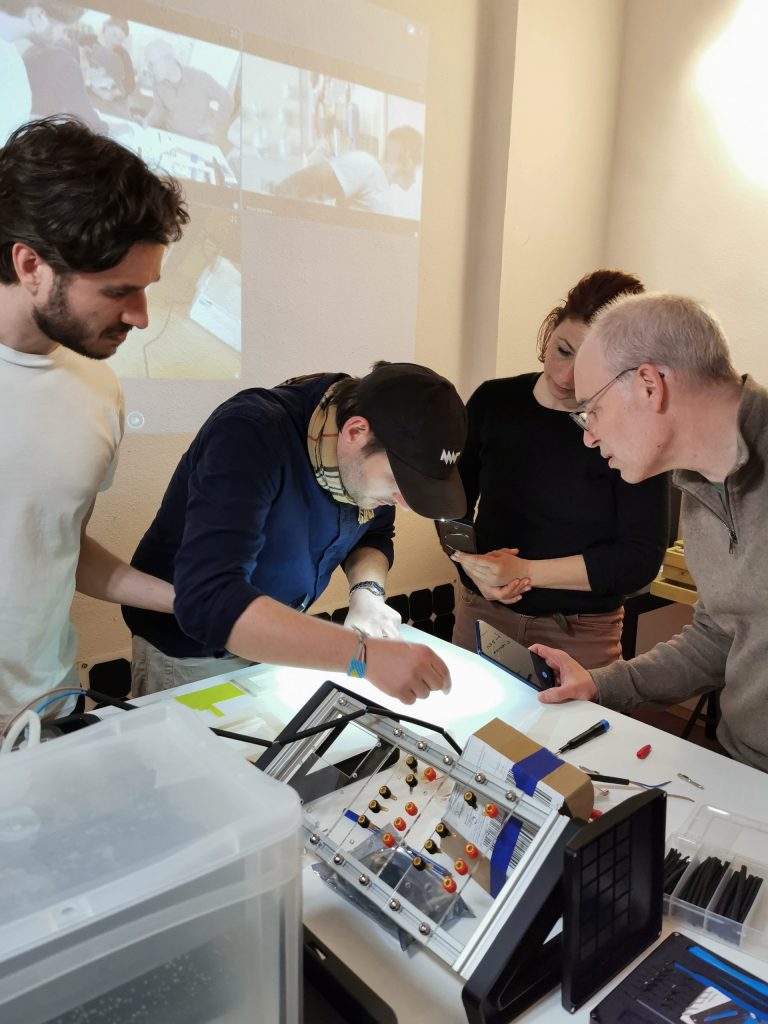
At some point, the fuel cell is assembled, the measuring station is soldered and the cabling connects the two and the caustic tank. “It’s really exciting to assign this spatially, i.e. around the zinc plate.”
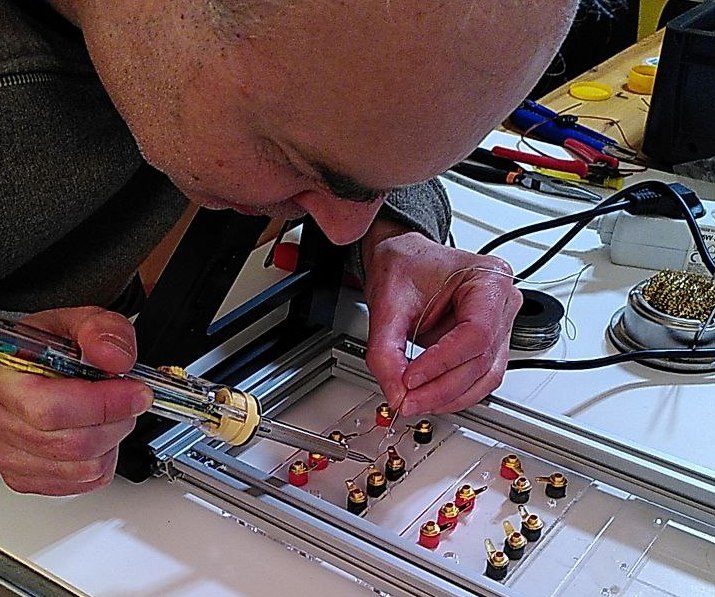
At a later stage, attempts will also be made to be able to manufacture certain parts ourselves. (Yes, this changes the lifecycle analysis with every modification. But: Hooray, new research projects!)
The project is also a training or further education programme for those present. Their backgrounds are extremely diverse. There are engineers, technicians and IT specialists, but there are also participants from the fields of education or business.
This immediately leads to a discussion about how we can go deeper into knowledge transfer in individual areas. This is the topic of learning and teaching that we want to tackle later. Initial ideas will be developed during the days.
For now, we’re glad that we have Oliver and Timm. They do it off the cuff and explain how a fuel cell works in passing. Most of them are long out of school, so they need the basics first! Whether you understand it is another matter. The test for me came the next day when I proudly explained to my chemist niece what I had learnt and done. She just said: “Aunt Sigrid, you didn’t understand anything about the fuel cell.” All right, but I’m working on it.
In general, we realise that the explanations sometimes take a while. In Berlin, we are still working on the theory of the anode reaction and cathode reaction when they are already assembling the first cells in Rahden. We are hopelessly behind, and even the Berlin sun doesn’t help.
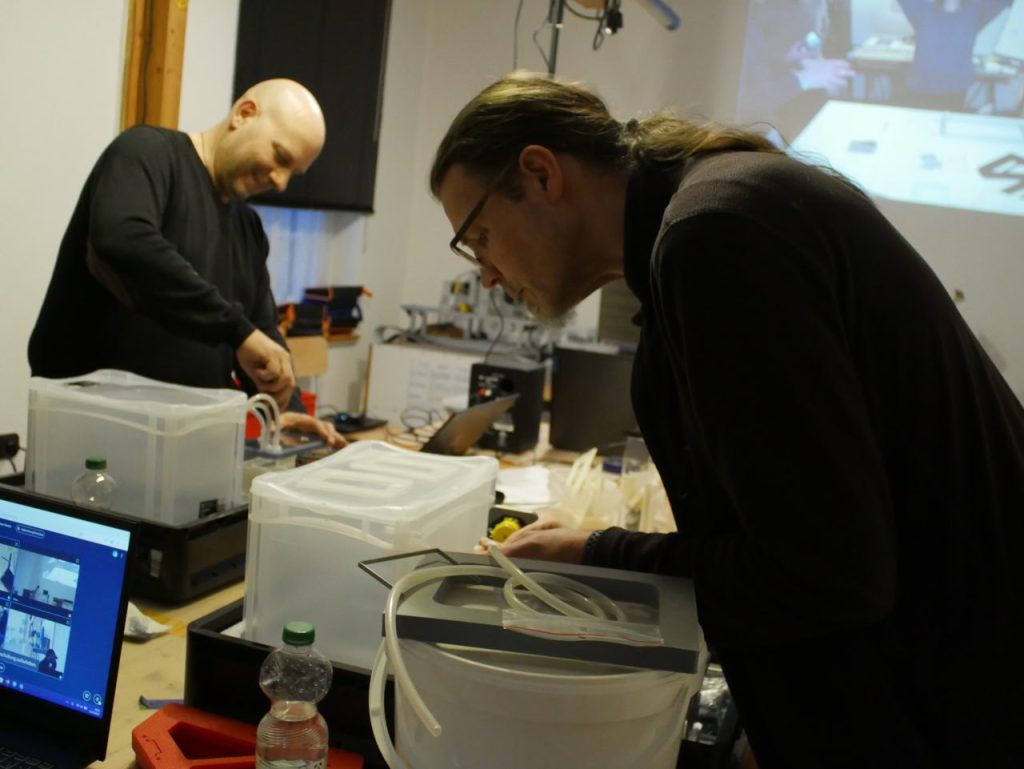
And anyway: new questions become recognisable with every step. Small ones like “Which is the banana plug and which is the crocodile clip?”, but also big ones: What exactly happens when zinc oxide precipitates? What kind of chemical reaction takes place at the membrane?
As long as it’s still about building, everything looks kind of good. A small crack in the cover from drilling the holes for the hoses, no problem. But as soon as the water is filled in, the whole thing is buoyant and no longer stable!
Super! That’s how we like it! If we can’t think of something straight away, we make challenges out of it. We give them to the community. (Timm and Martin have agreed on wedging as a first solution. It works).
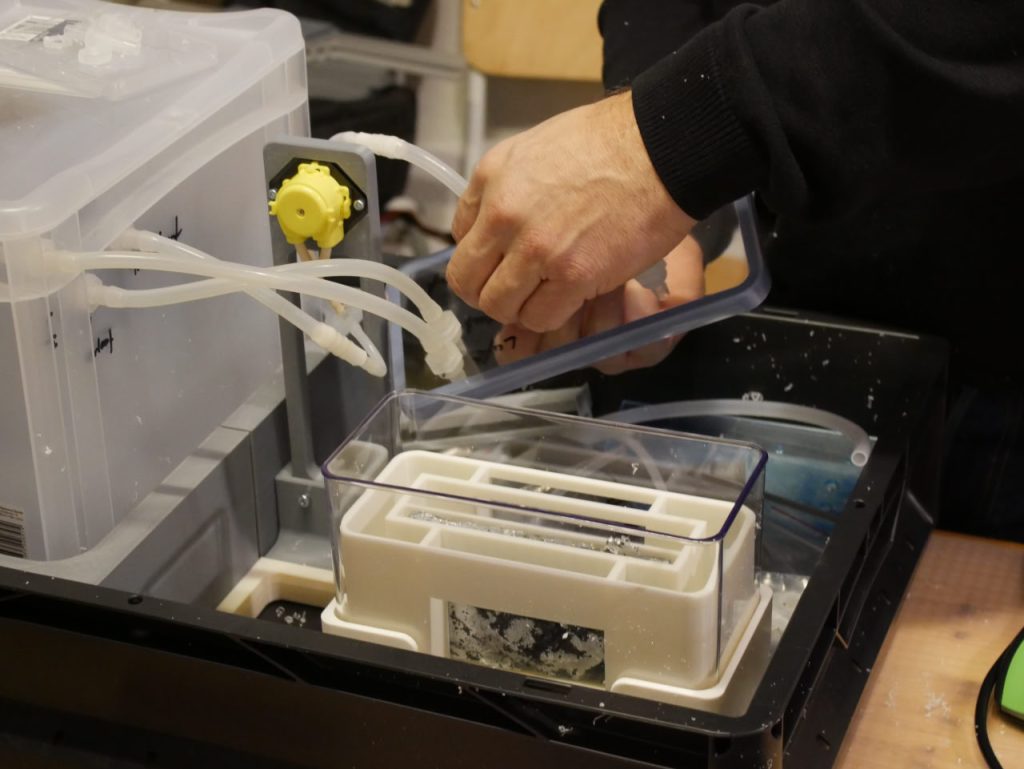
We are looking forward to the long-term tests. It is already becoming apparent that problems such as clogging of the membrane will occur. Something with carbonate formation. Please ask Oli, he knows all about it.
The question of how to constantly renew the potassium hydroxide solution will also have to be discussed. How do you get it out of its container again? It’s corrosive and you have to handle it carefully. A handy eyewash station and gloves are just the beginning…
That’s what I found so exciting about it: it was a start and I learnt a lot.
I found the hybrid format very exciting. Doing the same things in several workshops and seeing how different they are, even though they are actually the same, is fascinating.
We discussed many things and learnt a lot about chemistry, electronics, mechanics, materials, 3D printing, didactics, craftsmanship and knowledge management. We also learnt that the circular economy is complex. And that a few people working together can get a lot done.
More information about ZAC+ and the workshops:
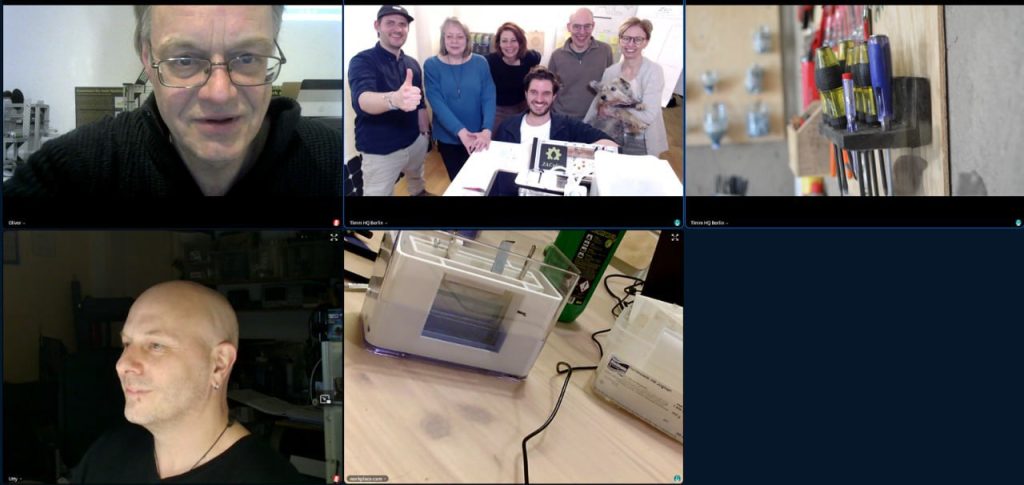
Last but not least we thank the Hans-Sauer-Stiftung who supports this project financially and made this workshops possible in the first place!
